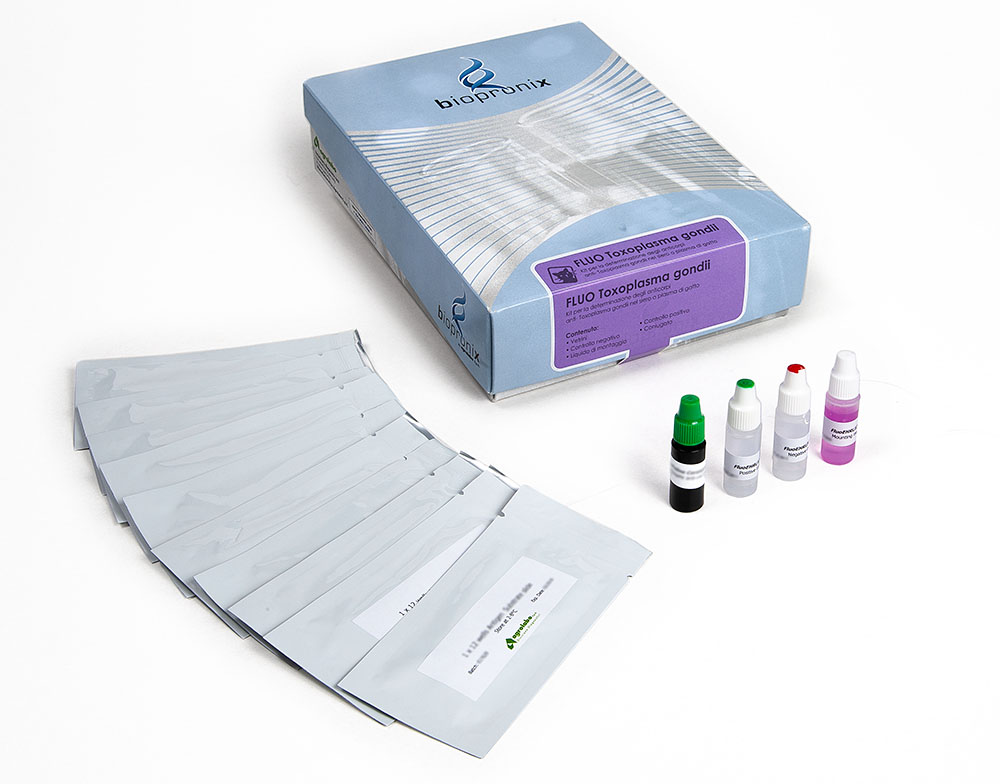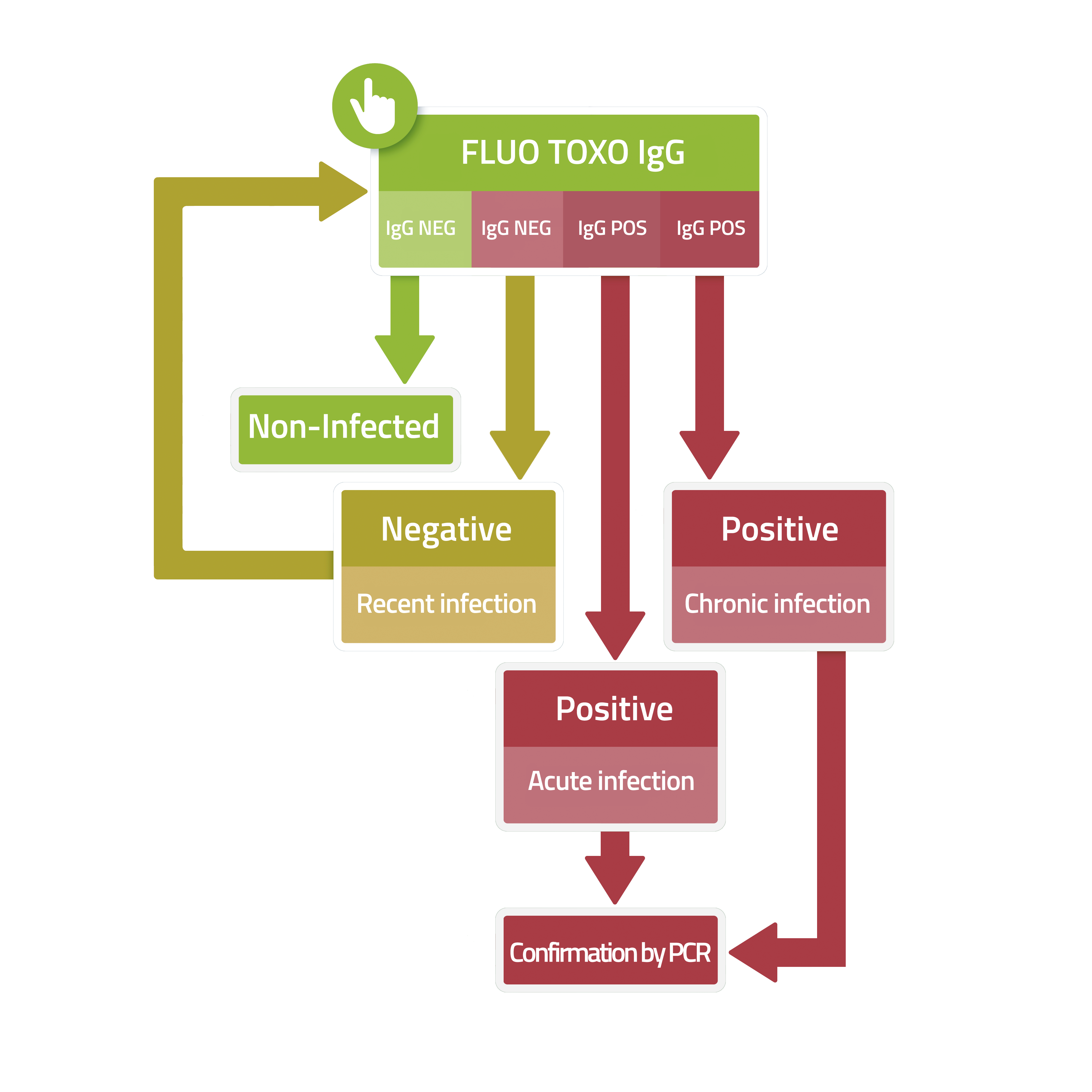FLUO TOXOPLASMA gondii
IFA kit slides for the detection of anti-Toxoplasma gondii IgG antibodies
Slides compatible with the following kits:
- Fluo Toxoplasma gondii DOG complete kit cod. 27266801
- Fluo Toxoplasma gondii CAT complete kit cod. 27265101
Toxoplasmosis is caused by the protozoan Toxoplasma gondii, an obligate intracellular parasite that infects all warm-blooded animals. Cats are the only definitive hosts, ie oocyst eliminators. The parasite has three infectious stages: sporozoites in oocysts, tachyzoites (active multiplication stage) and bradyzoites (slow multiplication stage) included in tissue cysts.
The infection can be caused by congenital way, by ingestion of infected tissues (rodents, birds) and contaminated water.
After ingestion, T. gondii in the cat, completes a neuroepithelial cycle in about 3-10 days, with the excretion of oocysts in the faeces. Cats eliminates oocysts in their feces for only 1-2 weeks. In 1-5 days the oocysts sporulate becoming infectious and extremely resistant in the environment. The extraintestinal cycle occurs in all intermediate hosts, including the cat, with the ingestion of tissue cysts or oocysts and the formation of tachyzoites. These are disseminated through the blood and lymphatics, infecting the cells of almost all tissues. Infected cells of immunocompetent subjects are isolated in tissue cysts containing bradizoites, generally found in cardiac and skeletal muscles and which remain dormant for life.
Toxoplasmosis in cats is generally asymptomatic or with transient diarrheal manifestations. The clinical forms are very rare in cats and in dogs.
The acute clinical forms, in immunosuppressed subjects or in young animals with transplacental transmission, mainly affect the liver, lungs and central nervous system.
Systemic forms usually develop following the reactivation of a latent infection and manifest themselves with the prevalent tissue involvement of the lungs, central nervous system, liver and pancreas, heart and eyes.
Clinical manifestations in dogs include predominantly systemic signs associated with respiratory, gastrointestinal or neuromuscular infections.

